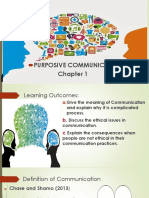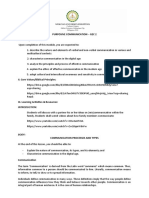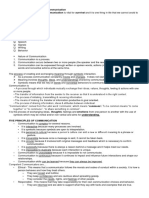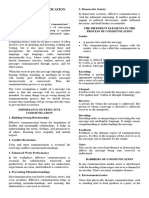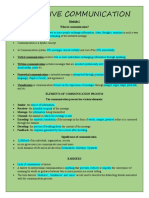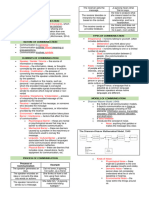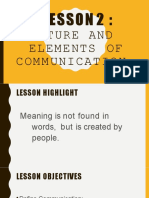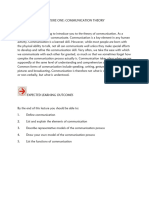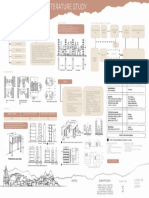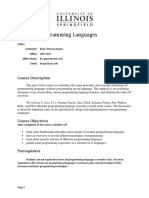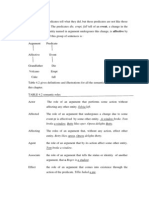0% found this document useful (0 votes)
11 views32 pagesPcom101 Week 1
The document outlines a course on purposive communication, detailing the agenda, communication processes, models, principles, barriers, and ethics. It emphasizes the importance of effective communication in various contexts and introduces different models like Aristotle's and Shannon-Weaver's to illustrate communication dynamics. The document also highlights communication barriers and ethical considerations to enhance understanding and interaction among participants.
Uploaded by
itadoriyujii977Copyright
© © All Rights Reserved
We take content rights seriously. If you suspect this is your content, claim it here.
Available Formats
Download as PDF, TXT or read online on Scribd
0% found this document useful (0 votes)
11 views32 pagesPcom101 Week 1
The document outlines a course on purposive communication, detailing the agenda, communication processes, models, principles, barriers, and ethics. It emphasizes the importance of effective communication in various contexts and introduces different models like Aristotle's and Shannon-Weaver's to illustrate communication dynamics. The document also highlights communication barriers and ethical considerations to enhance understanding and interaction among participants.
Uploaded by
itadoriyujii977Copyright
© © All Rights Reserved
We take content rights seriously. If you suspect this is your content, claim it here.
Available Formats
Download as PDF, TXT or read online on Scribd
/ 32
